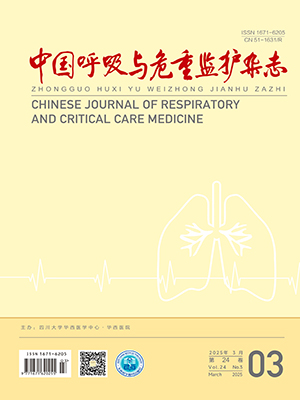| 1. |
Hinson KF, Moon AJ, Plummer NS.Broncho-pulmonary aspergillosis:a review and a report of eight new cases.Thorax, 1952, 7:317-333.
|
| 2. |
Chauhan B, Santiago L, Kirsehmann DA, et al.The association of HLA-DR alleles and T cell activation with allergic bronchopulmonary aspergillosis.J Immunol, 1997, 159:4072-4076.
|
| 3. |
Lazarus AA, Thilagar B, McKay SA.Allergic bronchopulmonary aspergillosis.Dis Mon, 2008, 54:547-564.
|
| 4. |
Patterson R, Greenberger PA, Radin RC, et al.Allergic bronchopulmonary aspergillosis:staging as an aid to management.Ann Intern Med, 1982, 96:286-291.
|
| 5. |
Patterson R, Greenberger PA, Halwig JM, et al.Allergic bronchopulmonary aspergillosis:natural history and classification of early disease by serologic and roentgenographic studies.Arch Intern Med, 1986, 146:916-918.
|
| 6. |
Kumar R.Mild, moderate, and severe forms of allergic bronchopulmonary aspergillosis:a clinical and serologic evaluation.Chest, 2003, 124:890-892.
|
| 7. |
Agarwal R.Allergic bronchopulmonary aspergillosis:lessons for the busy radiologist.World J Radiol, 2011, 3:178-181.
|
| 8. |
Walsh TJ, Anaissie EJ, Denning DW, et al.Treatment of aspergillosis:Clinical Practice Guidelines of the Infectious Diseases Society of America.Clin Infect Dis, 2008, 46:327-360.
|
| 9. |
Wark PA, Gibson PG.Allergic bronehopulmonary aspergillosis:new concepts of pathogenesis and treatment.Respirology, 2001, 6:1-7.
|
| 10. |
Greenberger PA.Allergic bronchopulmonary aspergillosis.J Allergy Clin Immunol, 2002, 110:685-692.
|
| 11. |
Ricketti AJ, Greenberger PA, Patterson R.Serum IgE as an important aid in management of allergic bronchopulmonary aspergillosis.J Allergy Clin Immunol, 1984, 74:68-71.
|
| 12. |
Malde B, Greenberger PA.Allergic bronchopulmonary aspergillosis.Allergy Asthma Proc, 2004, 25:S38-S39.
|
| 13. |
Stevens DA, Schwartz HJ, Lee JY, et al.A randomized trial of itraconazole in allergic bronchopulmonary aspergillosis.N Engl J Med, 2000, 342:756-762.
|
| 14. |
Wark PA, Hensley MJ, Saltos N, et al.Anti-inflammatory effect of itraconazole in stable allergic bronchopulmonary aspergillosis:a randomized controlled trial.J Allergy Clin Immunol, 2003, 111:952-957.
|
| 15. |
Wark P.Pathogenesis of allergic bronchopulmonary aspergillosis and an evidence-based review of azoles in treatment.Respir Med, 2004, 98:915-923.
|
| 16. |
Wark PA, Gibson PG, Wilson AJ.Azoles for allergic bronchopulmonary aspergillosis associated with asthma.Cochrane Database Syst Rev, 2003, 3:CD 001108.
|
| 17. |
van der Ent CK, Hoekstra H, Rijkers GT.Successful treatment of allergic bronchopulmonary aspergillosis with recombinant anti-IgE antibody.Thorax, 2007, 62:276-277.
|
| 18. |
陆海雯, 卫平, 徐金富.变应性支气管肺曲霉病的诊断标准变迁及影像学分类进展.中国呼吸与危重监护杂志, 2014, 13:102-104.
|





 Baidu Scholar
Baidu Scholar